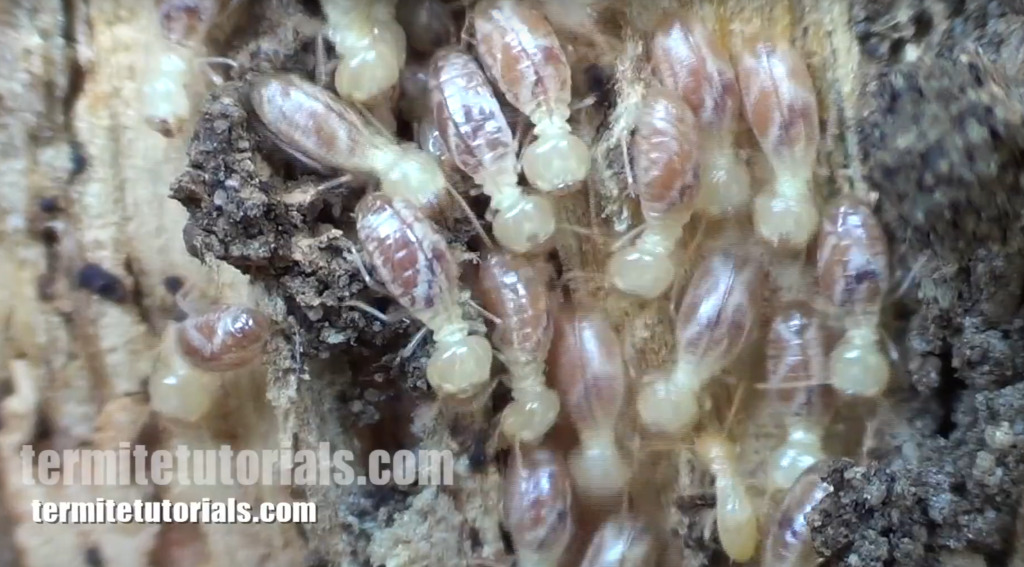Cedar Wood is one of the Few Wood Types Termites Don’t Like
In the world of termites, just about all cellulose products are on the menu for termites. Like many of our clients, you may be wondering if termites eat live trees and roots. They sure do. Cedarwood is the only wood that has shown to have a natural deterrent. Termites are often found eating trees from the inside out. Termites can be rather pesky and costly insects to deal with, but did you know they are essential for our environment? Learn more about these curious critters (and their eating habits) below.
What is on the Termite Menu for Today’s Dinner?
As mentioned above, just about anything with cellulose will attract termites – and make their stomach’s rumble. Have a look below for just a fraction of the products termites will find appetising.
What is Cellulose?
Cellulose is a naturally occurring substance in plant matter(*1). It is what keeps stems, leaves and branches standing strong. We also use it in papermaking and some fabrics.
Where Can You Find Cellulose Around the Home?
Wherever there are cellulose, shelter and access to water, termites will be happy. When walking around your home, take a note of the products made of cellulose. You will be amazed at how much termite food our homes have on offer.
A Taste of the Products Around the Home Which Contains Cellulose
- Some house foundations.
- Structural timber.
- Non-structural timber.
- Timber roofing.
- Garden sheds.
- Garden potting stands.
- Walk-in closet shelving and frames.
- Kitchen, bathroom, and laundry cabinetry.
- Linen cupboard shelving and frames.
- Architraves and other window frames.
- Photo and picture frames.
- Curtains and drapes.
- Hanging wall decorations i.e. macrame hangings.
- Lounges and lounge coverings.
- Carpet, mats, and rugs.
- Hanging planter pots made of cotton cord (and the plants themselves).
Termites Eat Living (and Dead) Tree and Plant Matter
You may be starting to think that all termite activity is bad. There are some impressive benefits to having termites around (just not in our homes). Albeit if termites can cause quite devastating damage to our homes and properties, they do a lot of good work! Find out about the importance of termites to our environment (and how they benefit us) below.
Termites Benefit the Ecosystem
Outside of our homes, termites’ favourite food is dead or decaying plant matter. This includes fallen trees, branches, and bark. They are essential for the Australian environment(*2). After they have digested and expelled the dead plant matter, it is returned to the soil where it once again becomes accessible to other plants and insects to eat. It also replenishes the soil and keeps the natural cycle going. Without termites doing this important work, the dead and decaying plant matter would take considerably longer to break down. Furthermore, the rejuvenation of the ecosystem would be greatly impacted(*2,3).
Insects and Environmentally Friendly Termite Control
Insects such as termites, earthworms and bees are critical for our survival and the survival of countless other species. If they were to become extinct, our world would be devasted. On the other hand, if humans were to become extinct, the natural world would flourish. How we manage termite activity including the chemicals we use have an impact. This is why we provide all our clients with highly effective environmentally friendly termite control options.
Termite Inspections and Barrier Systems
When was your last termite inspection? Our clients get annual inspections where we thoroughly check the entire property and maintain barrier systems. Inspections provide peace of mind that termites are not damaging the house while caring for the environment.
Feel free to contact us if you have any questions or would like to book a termite inspection.
References *1. BBC. What is Cellulose? BBC Bitesize. 2020. *2. Ali, IG, Sheridan, G, French, JRJ & Ahmed, BM. Ecological Benefits of Termite Soil Interaction and Microbial Symbiosis in the Soil Ecosystem Journal of Earth Sciences and Geotechnical Engineering. Vol. 3, No. 4. 2013. *3. Jouquet, P, Chaudhary, E & Kumar, ARV. Sustainable Use of Termite Activity in Agro-Ecosystems with Reference to Earthworms. A review. Agron. Sustain. Dev. Vol. 38, No. 3. 2018.

